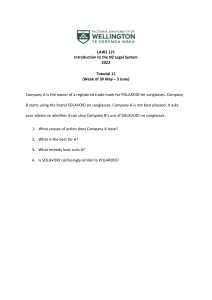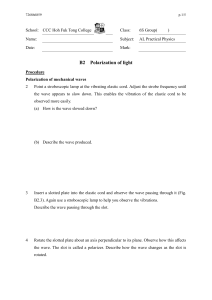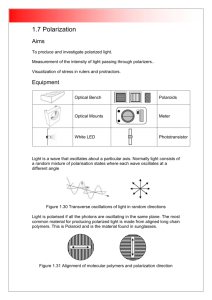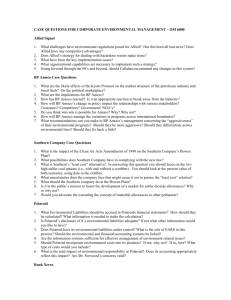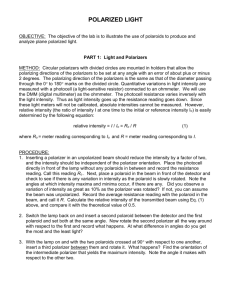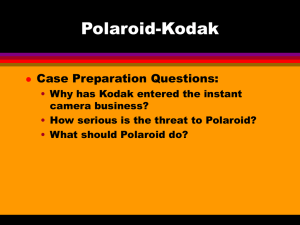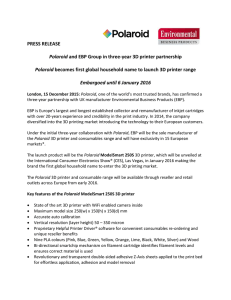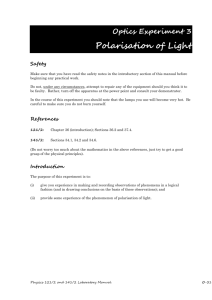Polarisation - schoolphysics
advertisement
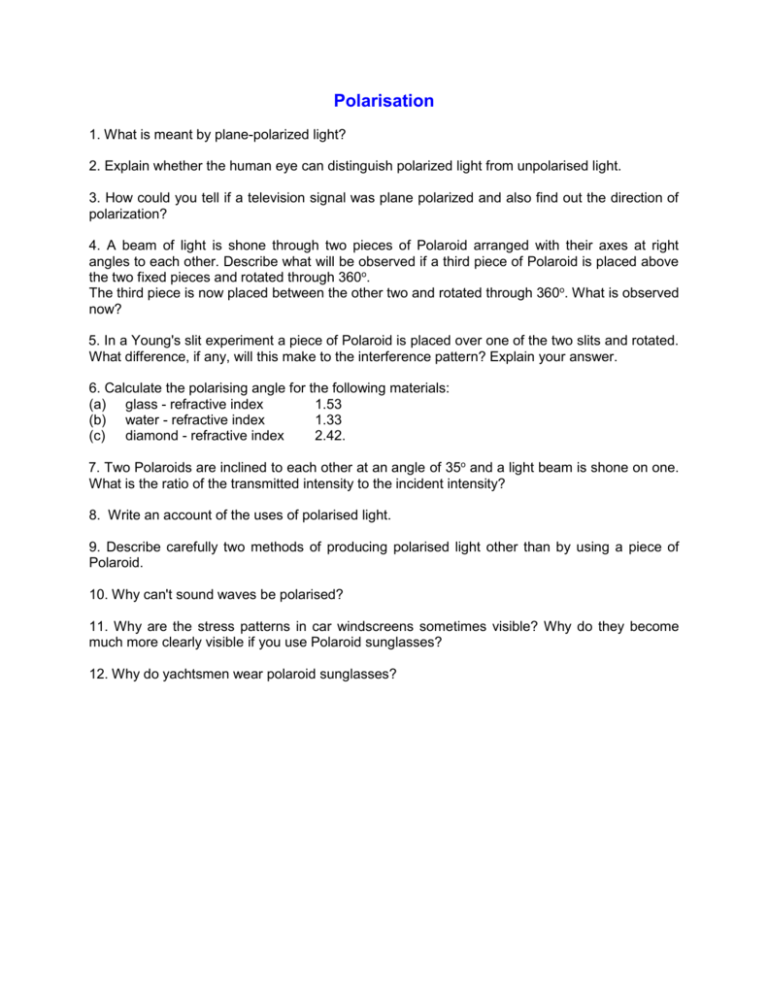
Polarisation 1. What is meant by plane-polarized light? 2. Explain whether the human eye can distinguish polarized light from unpolarised light. 3. How could you tell if a television signal was plane polarized and also find out the direction of polarization? 4. A beam of light is shone through two pieces of Polaroid arranged with their axes at right angles to each other. Describe what will be observed if a third piece of Polaroid is placed above the two fixed pieces and rotated through 360o. The third piece is now placed between the other two and rotated through 360o. What is observed now? 5. In a Young's slit experiment a piece of Polaroid is placed over one of the two slits and rotated. What difference, if any, will this make to the interference pattern? Explain your answer. 6. Calculate the polarising angle for the following materials: (a) glass - refractive index 1.53 (b) water - refractive index 1.33 (c) diamond - refractive index 2.42. 7. Two Polaroids are inclined to each other at an angle of 35o and a light beam is shone on one. What is the ratio of the transmitted intensity to the incident intensity? 8. Write an account of the uses of polarised light. 9. Describe carefully two methods of producing polarised light other than by using a piece of Polaroid. 10. Why can't sound waves be polarised? 11. Why are the stress patterns in car windscreens sometimes visible? Why do they become much more clearly visible if you use Polaroid sunglasses? 12. Why do yachtsmen wear polaroid sunglasses?
